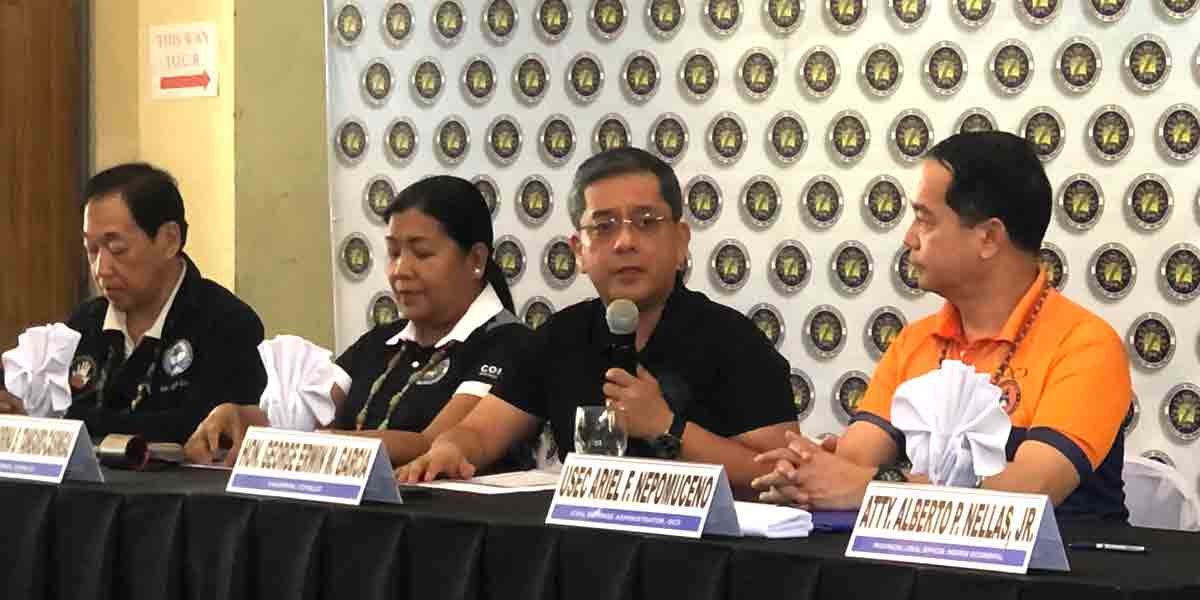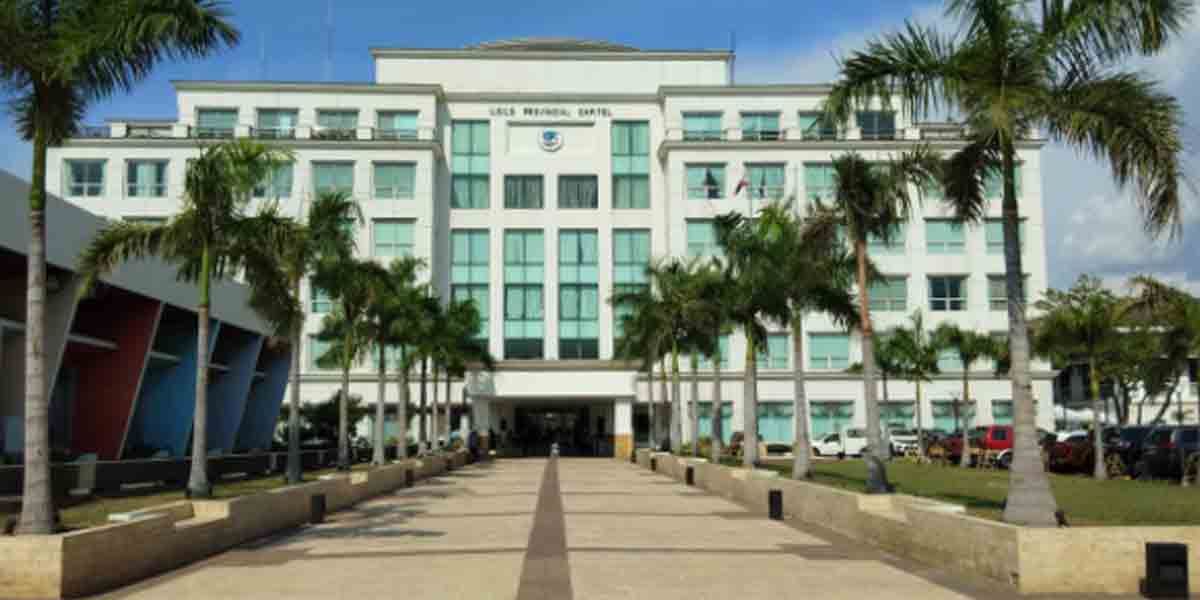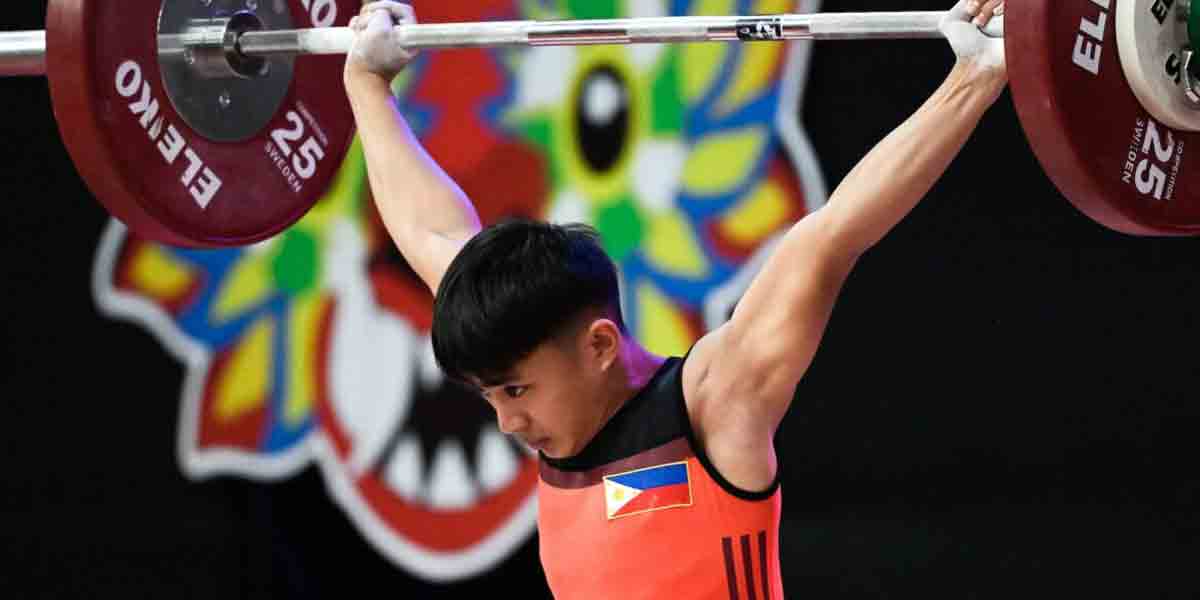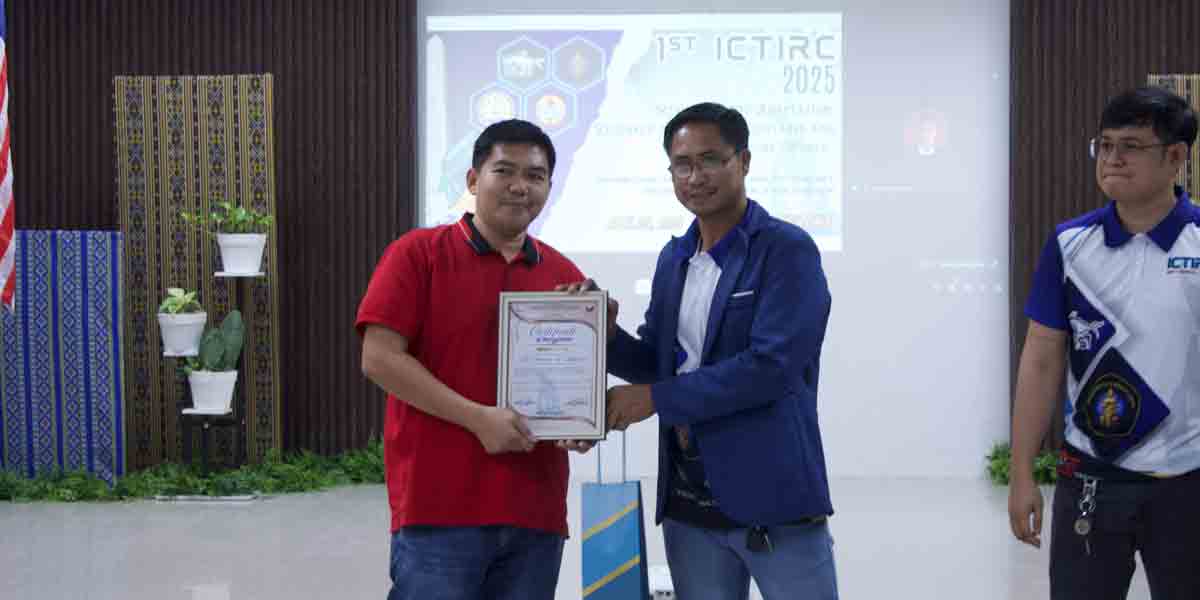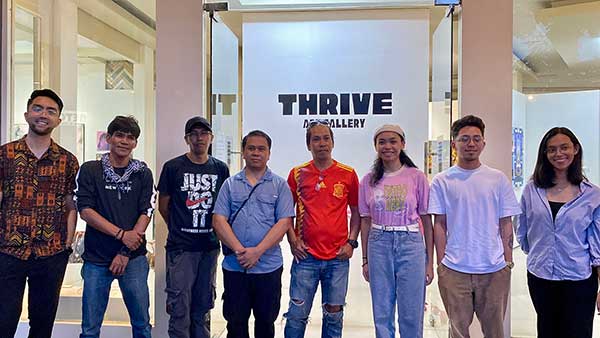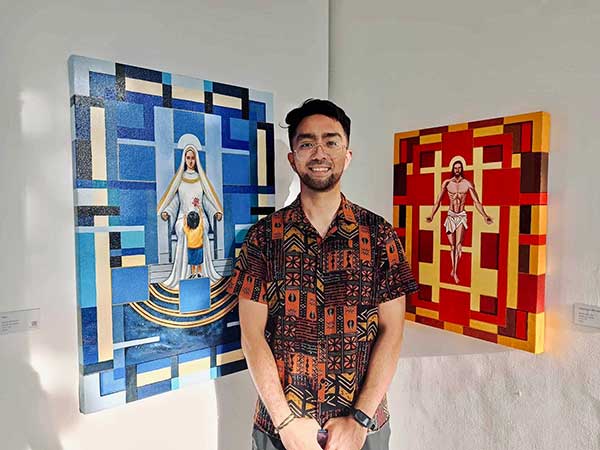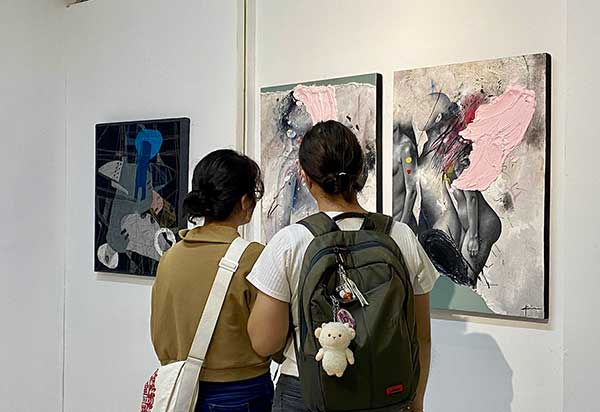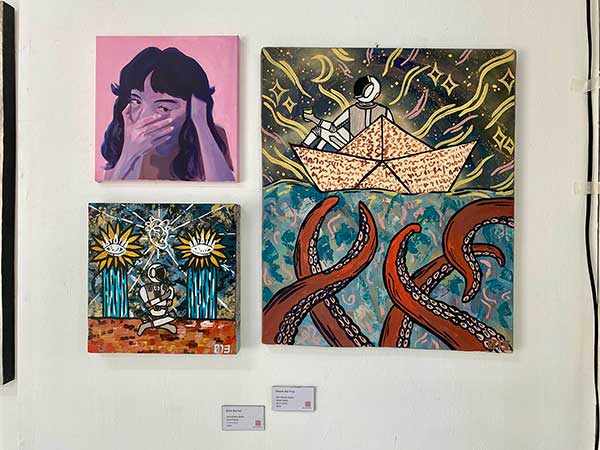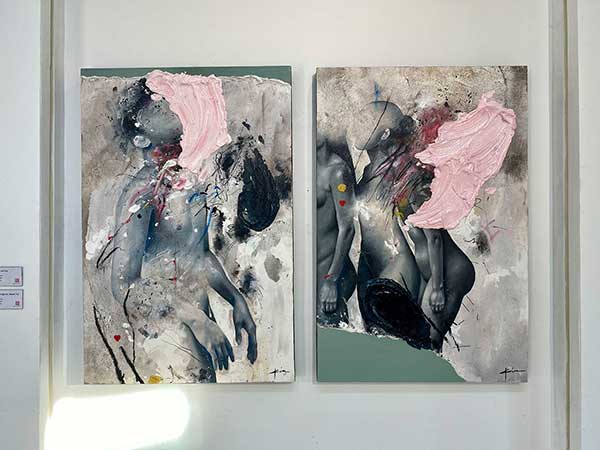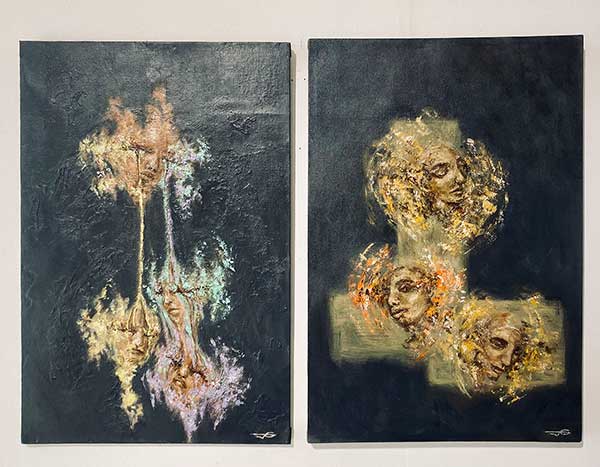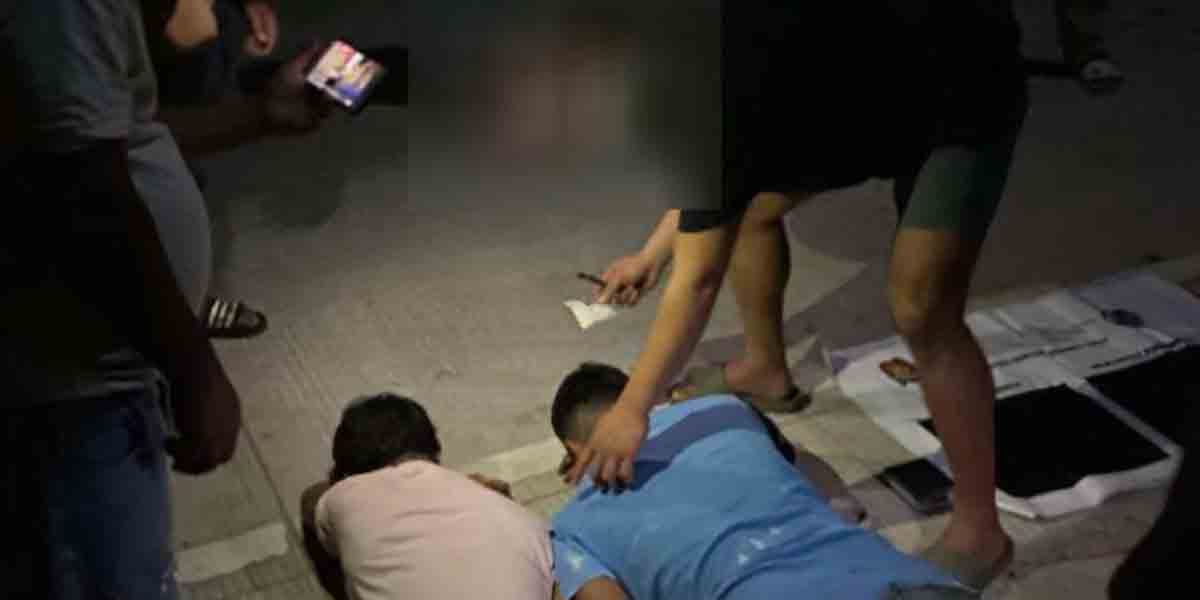By Mariela Angella Oladive
The Baysulangpu Artists Society opened its latest exhibit, “Dagta-an: Forming New Perspectives,” on August 10 at Thrive Art Gallery.
Running until September 10, the exhibit marks a milestone for the art group, showcasing their evolution as they embrace a new generation of artists with fresh perspectives and skills.
The exhibit’s title, derived from the Hiligaynon term meaning “to stain, to blot, to color,” surprisingly offers a cohesive exploration of the human form, despite each artist’s independent approach to the theme.
Through diverse styles and interpretations, the artworks converge around human forms, particularly the depiction of male and female figures, alongside some abstract works. The emphasis on feminine forms suggests a possible feminist theme, challenging traditional representations and exploring identity, vulnerability, and strength—central elements of feminist discourse.
Artist Yanni Ysabel Panaguiton noted that the thematic alignment was coincidental. She explained that the artists were given the title “Dagta-an” and encouraged to interpret it freely, resulting in the diverse yet unexpectedly interconnected pieces that comprise the exhibit.
The arrangement of the artworks adds an intriguing layer to the exhibit. The deliberate placement of pieces like Arnold Almacen’s “Once in a Blue Moon” and “Eclipse,” alongside Panaguiton’s “Cross (on) My Heart and Hope to Die,” depicting nude female bodies next to Johanz Mercurio’s “Fiat” and “Summum Bonum,” opens a compelling exploration of the irony surrounding the female form—its duality as both sacred and taboo.
Traditionally, the female body symbolizes fertility, life, and beauty, revered in various cultural and religious contexts. This reverence is reflected in the idealization and celebration of the female form. Yet, paradoxically, it is also subject to societal restrictions and moral judgments, often leading to objectification or censorship.
Mercurio’s pieces, influenced by his seminary days, introduce a spiritual dimension that contrasts sharply with the earthly, sensual representations of the female body.
This juxtaposition invites viewers to reflect on how institutions like the church, often seen as Ideological State Apparatuses (ISAs), shape societal views on morality, sexuality, and the human body. Philosopher Louis Althusser conceptualized ISAs as institutions such as the church, education, and media that disseminate ideology and reinforce a society’s dominant values and norms. The church, in particular, plays a significant role in shaping perceptions of sin, virtue, and the human body, often casting the nude female form as a symbol of temptation or sin.
In the exhibit, the nude female body is recontextualized as a site of both vulnerability and strength. By placing the sensual depictions of the female body alongside Mercurio’s spiritually themed works, the exhibit creates a dialogue between two contrasting perspectives: the religious view that often imposes moral constraints on the body and the artistic exploration that celebrates its natural form.
“Dagta-an” prompts viewers to consider how the concept of staining or marking can be metaphorically linked to the depiction of the human form and spiritual experience.
Since its inception in 2001, Baysulangpu has made substantial contributions to the local art landscape. The group is renowned for transforming blank walls into vibrant canvases, including notable murals of local landmarks such as cyclists, Dinagyang, Paraw Regatta, and various bridges.
Their commitment to public art was particularly evident during the pandemic in 2020, when they created the longest mural in Iloilo City, symbolizing unity during a challenging time.
Almacen explained that the name “Baysulangpu” derives from “pulang subay,” which translates to “red ant.” The phrase “Kon makasulapo ka sang subay nga pula” refers to the painful experience of being bitten by a red ant and reflects the group’s commitment to breaking free from the constraints of traditional gallery politics and favoritism. Almacen noted that the red ant’s defensive behavior—its aggressive response when threatened—symbolizes the group’s resistance against the challenges they faced.
Baysulangpu was established as a protest against the entrenched politics of galleries where they had previously been members. To address these challenges, the group took their exhibits to unconventional venues like restaurants, often using their art to critique social issues and express dissent.
Previous exhibitions, such as “Paradigm” (2021), “Turn Over” (2022), and “Bak-it” (2023), paved the way for the group’s latest display.
Other participating artists include Dea Mikaela Bañas, Edmar Colmo, Edwin De los Reyes, June Moreno, Kim Dela Cruz, Onofre Ballescas, and Vivien Gardose.
For more information about the exhibit and the Baysulangpu Artists Society, visit Thrive Art Gallery’s website (http://www.thriveart.org/gallery).


